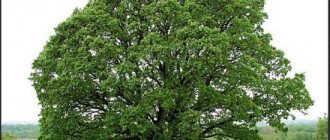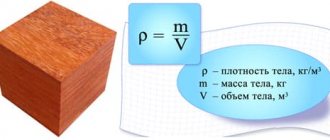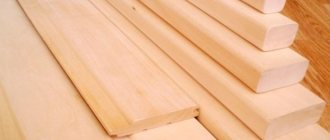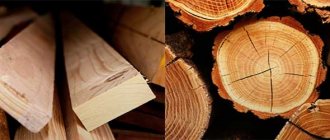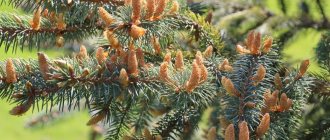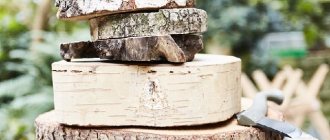TEAK
Botanical description: Teak (Tectona), a genus of tropical trees with hard wood, from the Verbenaceae family. Teak is native to southern and southwestern Asia, where it is a common component of monsoon forests. Teak grows naturally in India, Malaysia, Thailand, Myanmar (Burma), Indonesia. Now teak plantations are very widespread in Central America (Panama, Costa Rica)
Teak
The name teak comes from the Malay word Thekku. The Latin name Tectona grandis comes from the words tecton - carpenter, and grandis - large. These large trees grow up to 30-45 meters in height, the trunk diameter reaches 1.5 m, and in old trees almost 2 meters. The length of the trunk to the beginning of the crown varies from 6 to 25 meters. The leaves of the tree are 25-30 cm long and 17-37 cm wide. During the dry season, teak trees shed their leaves. Teak leaves are used in India to make Pellakai gatti, a breadfruit dumpling. The dough is poured into a teak sheet and steamed. The teak tree blooms with clusters of white small but abundant flowers.
There are three known types of teak: * Tectona grandis (common teak), of greatest importance, is widespread in India and Indochina. * Tectona hamiltoniana (Dahat teak) is a local endemic species found in Burma, where it is critically endangered. * Tectona philippinensis (Philippine teak) is endemic to the Philippines and is endangered.
Real teak acquires its golden sandy brown color when exposed to sun and rainwater.
Teak parquet
Color differences are leveled out under prolonged exposure to the atmosphere. Fresh sawn wood has a very diverse range of colors (green, dark brown, light brown, gray-white, etc.). Coating Teak with a special oil reveals its natural color. The oil gives teak wood a deep, rich and rich color. Teak wood without treatment with oils and varnishes becomes silver-gray.
When exposed to ultraviolet radiation and moisture in open spaces, Teak acquires a luxurious silver-gray color. Teak wood has narrow sapwood that is grayish or white in color. Wood has its own characteristic smell. Characterized by a dull shine. The average density coefficient is 0.55 (weight of dried wood/volume of freshly cut wood), which corresponds to an air-dried wood density of 670 kg/m3. The fiber is smooth stripes with periodic mineral inclusions. The wood has a pronounced texture.
The wood of old trees that have grown slowly in natural conditions is stronger and more durable than the wood of young trees grown on plantations. Young wood is more prone to splitting and water damage. It is common for plantation teak to have irregular patterns of dark stripes or spots. However, drying selected wood from plantations in special kilns makes it comparable in quality to wood from naturally grown trees.
Teak dries well, but rather slowly, shrinkage is very slight. Average shrinkage rates (when drying fresh wood in a chamber) are: radial - 2.5%, tangential - 5.8%, volumetric - 7.0%. You can air dry or oven dry. Once dried, teak retains good geometric stability.
Application
Teak is one of the most famous woods in the world due to its valuable properties - durability, strength, weight, workability and attractive appearance. Teak wood is very durable in dry and wet conditions.
Teak wood is used for the production of outdoor furniture, ship decks, and other products intended for use in difficult weather conditions. It is also used to make floors in rooms with high humidity. Teak veneer and plywood are used for elegant wall coverings in homes and offices, and for furniture finishing.
Fashionable in the 1950s and 60s, the style of teak furniture known as “Danish Modern” is now experiencing a second peak in popularity. Teak furniture is in very high demand among the types of classic furniture.
Amaranth - the most unusual color
Amaranth is an incredibly beautiful tree species of the Peltogin genus. This is one of the most magnificent colors found in plants in the world. The core is painted in a rich purple hue, which looks great in furniture decoration and various accessories.
It has increased wear resistance, impact resistance, and water resistance. Amaranth is also called purple heart, pearlheart, and purple tree. This breed is endangered due to rampant deforestation.
BUBINGO
Bubingo is found in botanical literature under this name - Guibourtia tessmanii. The presented tree can be found in a flat, striped or broomed form.
The origin of Bubingo is Africa. Found mainly in Cameroon and Gabon. The height reaches 25-30 m with a diameter of 1 m or more. The core of the tree has a red-purple color with dark veins. The sapwood is lighter in tone. The wood is hard and heavy. Bubingo edged boards are suitable for any type of polishing and painting. Lumber from Bubingo is used both for the production of luxury furniture and for the production of mass products, but to a greater extent, for the production of decorative veneer. When planing, the wood and the finished veneer are called “bubinga”, when peeling (it makes a slightly different veneer pattern) – “kevasingo”.
Zebrano
This tree received its unusual name for the original color of the wood, reminiscent of zebra skin. The light brown base is intersected by many dark brown stripes.
Zebrawood is valued not only for its visual appeal, but also for its very durable structure. The combination of strength and beauty allows the material to be used for finishing the interiors of expensive cars, floors and walls in high-status offices.
Cost 1 cubic. m of zebrawood wood starts from $6,000.
LAPACHO
Lapacho tree - properties and characteristics
Description: Name: Lapacho (local). Botanical name: Tabebuia Serratifolia (bot.) German name: Ipe (German) English name: Guayacan (English)
The species name tabebuia comes from the language of the South American Indians. This species includes a large and diverse population of trees that has undergone many changes in its botanical nomenclature over time. Today, this species is divided into four different groups: thuja, roble, lapacho and others. The most common name used is ipe. Sometimes it is called ironwood. As a rule, trees reach a height of 40-45 meters with regularly shaped trunks with a diameter of 60-90 cm.
Color: Relatively wide sapwood is yellowish-white in color and differs sharply from heartwood. When freshly cut, ipe heartwood is grayish in color, darkening over time to grayish green and brownish olive. Freshly sawn ipe wood contains a wide range of colors, quickly turning into more uniform, darkening brown and dark brown colors. The difference in color depends mainly on where the tree grows. The color can vary from light yellowish-brown with a greenish tint to dark brown, almost black.
This wood is a very durable species. The wood is very resistant to rot, fungi and termites, and is resistant to the effects of shipworms. It has been tested by the US Forest Products Laboratory with a plus rating of 25 years or more. The wood has increased resistance to natural fire (rated by NFPA class or UBC class 1). Wood is highly resistant to chemical treatment.
Growing region: Central and South America (Colombia, Venezuela, Brazil, Peru, Bolivia).
Application: suitable for wooden structures with high loads: stairs, floors, beams, etc. Contains a lot of oily substances and is highly resistant to external influences. This is one of the few types of wood that is recommended for “street” (terrace) wood coverings. Floor coverings for industrial and residential premises, furniture, stair handrails, construction beams, logs, timber, decorative veneer. Indispensable for arranging sea docks, berths and piers.
Lapacho is a type of ipe; grows in the tropical forests of Central and South America. Lapacho sapwood is much lighter in color than heartwood. The color of lapacho wood varies from light, ash-beige or fawn to the darkest mocha. The structure of the tree is wavy, with thin fibers; intertwined veins are visible. Lapacho wood is heavy and hard, difficult to work but easy to polish; it is also suitable for turning products; very resistant to treatment with pesticides. In addition, Brazil nut wood lasts a long time, does not rot, and is not susceptible to fungi and parasites (the tree is resistant to termites, but can be damaged by shipworms). Lapacho wood is used in the production of furniture, parquet, in large-scale construction and industry (due to the high strength of lapacho, sleepers and industrial flooring are often made from it).
And in South America, the drink made from lapacho bark is better known than the parquet made from its wood; his recipe for this drink was known to the Incas.
Lapacho contains a lot of vitamins and microelements: iron, potassium, copper, calcium. Lapacho contains 18 different quinones, which are rarely found in a single plant. No caffeine. The Incas called lapacho the “tree of life” and used a drink made from its crushed bark to treat almost all diseases: intestinal inflammation, cancer, diabetes, arthritis, anemia, asthma, impotence, hair loss, etc. Today the plant is used in clinics in Brazil to treat patients with leukemia, diseases that reduce immunity. The antitumor effect explains the presence of an antioxidant such as carnasol in lapacho. And the presence of tecomine helps reduce blood sugar levels.
Method of preparation Perhaps lapacho is the only tea-like drink that is boiled for preparation. The preparation method is simple: boil a liter of water and add 3-4 teaspoons of lapacho, then boil for another 5 minutes and let the tea steep for another 15 minutes. The result is a light brown, refreshing drink with a peculiar bitter taste. You can drink it either warm or cold.
Merbau
This breed was brought from East Asia.
Due to its density and moisture resistance, wood is also used in yacht and shipbuilding. Boards made from this wood are also used as flooring. In its external and operational characteristics, Merbau coating is similar to ash parquet. This wood can be used to decorate a bathroom or work outdoors. Over time, the wood may darken, changing its brown color. Sometimes yellow veins are found on the brown-red tint of the material. The density of Merbau is 830 kg/m3.
ROSEWOOD
Rosewood is a wood (namely wood, not wood) that has perhaps the most diverse origins. After all, not only different species, genera, but even plant families compete for the honor of being called rosewood!
Rosewood is a fairly stable wood in the Russian climate and has long been used as one of the main exotic trees in block parquet. Previously, rosewood was selected more carefully and the presence of planks with a greenish tint was considered unacceptable for the highest grade A. Massive deforestation has critically reduced the number of rosewood forests, and therefore the sale of rosewood parquet in Europe is now prohibited in principle. Even Asian companies now allow rosewood with a greenish tint, but, perhaps, in the next few years rosewood parquet may become unavailable.
In the most general case and understanding - precisely in terms of wood, and not the epistemology of its origin, rosewood is called dense, durable and beautiful wood, predominantly pink in color. And which clan or tribe she belongs to is often a secondary matter. Thus, being similar in its technical and aesthetic characteristics, rosewood is produced by South American jacarandas (Jacaranda) from the Bignoniaceae family and Dalbergia from the legume family. The English name Rosewood is generally a descriptive term. However, botanists are inclined to consider “real” rosewood to be wood obtained from trees of the Dalbergia genus.
Even if we take only the Dalbergia genus, it’s not easy to figure it out. In it, various scientists count 100, 150 and even 300 species! They grow throughout the tropical zone - America, Africa, Southeast Asia. Among the species there are both powerful trees and small shrubs, which, however, are of no value in terms of timber production.
Depending on the species and location of growth, the trunk diameter ranges from 0.3 to 1.5 meters, and the average height of a mature tree is 25 meters. The wood is expensive because it grows very slowly, taking about two centuries to reach “maturity.”
A sound breed whose color varies depending on the variety. The main tone is pinkish with a brown tint. It can be darker - the color of bitter chocolate with a pattern of darker veins, sometimes with a dark purple tint. True rosewoods obtained from Dalbergia have a pleasant floral scent when freshly cut, which, unfortunately, disappears after drying. The sapwood is lighter in color, clearly visible and is not used in production. Rosewood wood (regardless of origin) is very dense (0.85-1.01 g/cm³) and hard (about 3000 units on the Janka scale).
Rosewood is dried without problems, but to minimize the formation of cracks, “gentle” modes are chosen - the wood is expensive. It is difficult to process it manually due to its high hardness. Drilled, chiseled, milled and turned - in accordance with hardness; It glues well and polishes well, especially with the use of waxes. Excellent resistance to moisture, fungus, mold and woodworms - even termites do not spoil it, they cannot cope.
Rosewood is used to make luxury furniture and flooring - piece and especially artistic parquet, solid and parquet boards. But all these are top-class products. It is peeled and planed into exceptionally beautiful veneer; its pattern depends on the choice of cutting direction, which allows it to be diversified and produce surprisingly exquisite patterns. Musical instruments are made from rosewood, or rather their individual elements - usually the saddles and necks of bowed and plucked string instruments. The plates of xylophones and the bodies of luxury acoustic and electric guitars are also made of rosewood. Cue cues made from rosewood are prized among billiard players.
Due to its decorative properties and durability, rosewood is used in the design of luxury yachts, carriages and liners. Strength and durability make it a desirable material for the production of window frames and doors, but only a few allow themselves to spend such money.
The most famous and widespread types of rosewood are usually considered: Indian - Dalbergia latifolia - grows naturally in India, Java, Sri Lanka, Pakistan; in Indonesia it is grown artificially. There are also plenty of commercial names - Bombay ebony, Indonesian rosewood, Malabar, Sonokeling and, of course, Indian rosewood. Sissoo - Dalbergia sissoo - is another species that grows only in India; in trade practice it is often called Indian rosewood. Rio rosewood (Rio jacaranda) - Dalbergia nigra - there is currently so little of it left that extraction and export are prohibited. This wood is not represented on the official market. Kingwood (kingwood or violet jacaranda) - Dalbergia cearensis - also of Brazilian origin, has purple wood. It is mainly used for small crafts and typesetting decor (marquetry, intarsia, etc.) Royal - because it was a particularly popular material during the time of King Louis XIV. Sometimes it is confused with another South American species of a similar color - amaranth. Cocobolo (granadillo) - Dalbergia retusa - grows from Panama to Mexico; The wood is brightly colored in various tones, sometimes reminiscent of a rainbow in its multicolored colors. Limited availability on the market. Brazilian tulip (jacaranda rose) - Dalbergia frutescens - freshly cut wood smells like tulips. Mining began in the 18th century, so now reserves are small and wood is used mainly for decoration or works of small forms. Amazonian rosewood (jacaranda do Para) - Dalbergia spruceana - also from Brazil, has limited industrial importance.
Rosewood is also found in other Asian countries, for example, Siamese, which is called the “fire tree,” and Burmese, a Burmese tulip (or rose) tree. They also bring rosewood grown in Cambodia and Vietnam, each with its own name. However, all these types are represented very little on the market.
Grenadil - an expensive African plant
Grenadil is another type of wood that is one of the most valuable in the world. It belongs to the genus Dalbergia of the legume family. It also has names: African ebony, mpingo. Grenadil is distributed in Kenya, Tanzania, and Mozambique. The core part is deep black, sometimes with a reddish tint.
This variety has long been highly valued. Musical instruments were made from it, since grenadil has high acoustic properties. It is also used to make luxury furniture and accessories. Due to poaching, the grenadile population has declined and the plant is now protected. The genus Dalbergia includes such valuable species as cocobolo, which has a stunning cherry hue, and bahia, whose core has a pleasant pink tone.
IROKO
The Iroko tree, like most exotic trees for us, has many names that not only do not give, but often distort the general idea of it. Even modern botanists have not come to a consensus on how to call it. Some call it Chlorophora excelsa, others Chlorophora regia (meaning chlorophyll longa and chlorophylla regal, respectively). Still others call Milicia excelsa in memory of Senhor Milizio, one of the former leaders of present-day Mozambique, and not at all in memory of the militia that existed in our country. Other names under which this wood can be found are abang, amoreira, odum, bang, lusanga, rocco, hosanne, oroko, semli, chamfutu, mvule, flounder, rule moreira, African teak or oak, and Nigerian teak. This is not a complete list, due to its numerous African countries, on whose lands iroko is still growing (its reserves are rapidly declining) and mined. This list includes almost all states of equatorial Africa from Ivory Coast to Cameroon. Almost everywhere where its main distributor lives is the straw-yellow fruit bat, which feeds on sweet fruits (Iroko belongs to the mulberry genus) and, passing them through its intestines, prepares the seeds for germination..
This African giant reaches a height of fifty meters and its trunk often exceeds three meters in thickness. At half the height and even higher there are no knots on the trunk, and the butt is also practically absent. The tree is covered with ash-gray bark, the crown is dense, consists of numerous branches covered with large oval-shaped leaves up to a quarter of a meter long. Their inner surface is covered with soft fluff, and the outer surface is rough to the touch and resembles sandpaper. Iroko is a soundwood species; the sapwood is small in thickness (5 to 8 cm) and pale brown in color. The core is colored in brown tones of varying saturation - from light amber to dark chestnut. As the wood dries, the color becomes darker. Dries without problems, occasionally showing a tendency to crack. Dried wood has a density of about 670 kg/m³..
An insidious feature of iroko wood is the stones found in it. These are natural deposits of calcium carbonate (chalk), which seriously complicate processing, leading to damage to the cutting tool. The reason for their appearance has not been reliably established; it is believed that they arise as a result of mechanical damage during the growth process. But, despite such pitfalls, iroko is generally easy and well processed with any type of tools, displaying a moderately curled, but moderately coarse and even texture.
In terms of mechanical properties, iroko wood is comparable to teak and oak, although it is somewhat inferior to them in bending strength and resistance to compression along the grain. It adheres well and holds screws or nails. To improve the quality of the surface finish, porosity filling and preliminary priming are recommended. But iroko is exceptionally resistant to rotting and damage by woodborers - borers sometimes gnaw through the sapwood, but never the core. These properties and high wear resistance determine the areas of application of iroko - for working surfaces of bar counters and tables in public catering establishments, in the production of furniture, doors, and veneer. Iroko is used to make excellent floor coverings - solid boards and block parquet. Thanks to its technical characteristics, iroko can replace much more expensive teak in many products without losing its consumer qualities. Especially when used in natural conditions, iroko is exceptionally resistant to all types of atmospheric phenomena.
The advantage of wood is its relative cheapness compared to teak and greater availability. However, this state of affairs is likely to not last long - in recent years, the rate of harvesting of iroko has increased so much that it is increasingly classified as an endangered and rare breed. Regarding technical characteristics, iroko is still inferior to teak, which is why it is sometimes called “folk teak” - another, already domestic name. Disadvantages include the high allergic activity of wood dust and certain difficulties in processing (stone inclusions).
Bokote ($33,000 per 1 board foot)
The most expensive wood in the world. Cordia tricotoma, which grows in the Caribbean, Mexico and Colombia, is also known as Mayan tree, Mexican rosewood, salmwood and becote. Bocote is distinguished from other valuable breeds by its characteristic pattern.
The base color of the wood ranges from greenish-yellow to golden brown, and the dark chocolate-colored stripes form a unique, intricate pattern, most often in the form of a bird's eye.
Bokote is easy to process, acquiring a slight shine after it. For its unique appearance and durability, it is highly valued in the production of furniture, parquet and decorative interior elements. The only disadvantage of this wood is its price, since the number of trees is limited and demand far exceeds supply.
SUKUPIRA
A tree with such a dubious name from the point of view of euphony grows in Brazil, where, as we know, there are many wild monkeys. They easily climb to a height of thirty meters - this is the height that sukupira reaches when it reaches maturity. Approximately, this occurs at the age of a century, but the best wood for harvesting is obtained when the tree is a quarter of a millennium old. “Forest experts” identify more than a dozen subspecies of this tree, and linguists have come up with about thirty commercial names for sucupira wood, which there is no point in listing.
A mature sucupira produces a cylindrical trunk twenty meters long, free of branches and more than a meter across at the butt. Almost any thing can be made from such a “blank,” but most of the wood is used for the production of parquet staves, solid wood and parquet boards. These products are made from strong and durable wood and are excellent. Thanks to the rich colors and rich palette, the products are also beautiful. The large, homogeneous structure, presented in shades from “cocoa with milk” to chestnut and even burgundy, is not afraid of sunlight and does not fade under it. Wood is also resistant to other “damaging factors” of the environment - moisture, fungi, rot, wood borers. For this, it is appreciated by manufacturers and consumers of floor coverings. Natural beauty and unique texture make sucupira flooring desirable for people with good taste and income.
Speaking about the characteristics of wood, we note that it is very dense and heavy (which is more of an advantage than a disadvantage for a floor), it is quite difficult to process, but it is sanded and polished well. The density of sucupira ranges from 0.85-1.10 g/cm³, and the Brinell hardness ranges from 4.0 to 4.5. After harvesting, it cannot float down the river (after all, it grows in the Amazon basin), since it sinks in the water. When drying, it requires a “delicate” approach, since when the process is accelerated, the sucupira warps. When dried, the color of the heartwood intensifies (the sapwood is not taken into account, it is light, thin and not used), the wood “ripens” and darkens. It accepts treatment well with waxes and oils, somewhat worse with varnishes, it glues satisfactorily, holes need to be drilled for nails and screws.
Because The wood is super-dense; when using sucupira parquet at home, it is necessary to use a humidifier that stabilizes sudden changes in humidity when the heating is turned on and off.
In its homeland - in addition to Brazil, it grows in Venezuela, Peru and Colombia - sucupira is used in construction, including structures that have constant contact with water - bridges, piers, etc. The indigenous population produces souvenirs from it, and in the States and Europe, in addition to parquet and decking, small pieces are used to produce elite billiard cues, finishing the necks of musical instruments, “cool” cases for gadgets - USB drives, mouse and cell phone cases. The handles of hunting knives also turn out well. A small amount of wood is used for furniture, but the predominant share is used for flooring. Very beautiful, good quality, reliable and durable. Moreover, they are exclusive.
Sandalwood
The subtle aroma of sandalwood is known to every perfume connoisseur. The high cost of sandalwood is due to its aromatic properties. Oil is prepared from it, used in cosmetology and perfumery, and the material itself, which has a pleasant pinkish tint, is used in the production of parts for expensive furniture and souvenirs. The emitted woody aroma, reminiscent of a mixture of lemon, rose and musk, lasts for several years.
Sandalwood is a rare tree, on the verge of extinction. For 1 kg of raw materials, buyers pay about $20,000.
